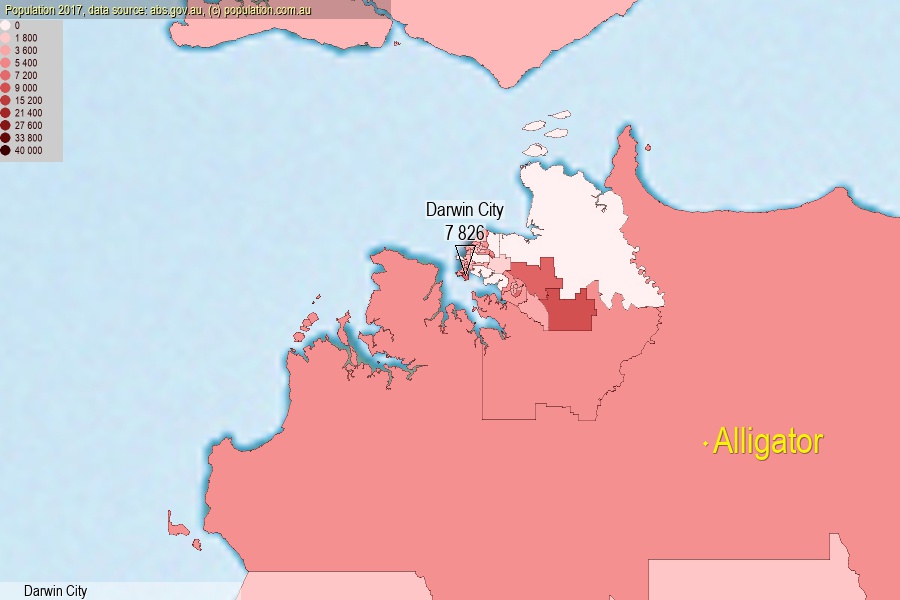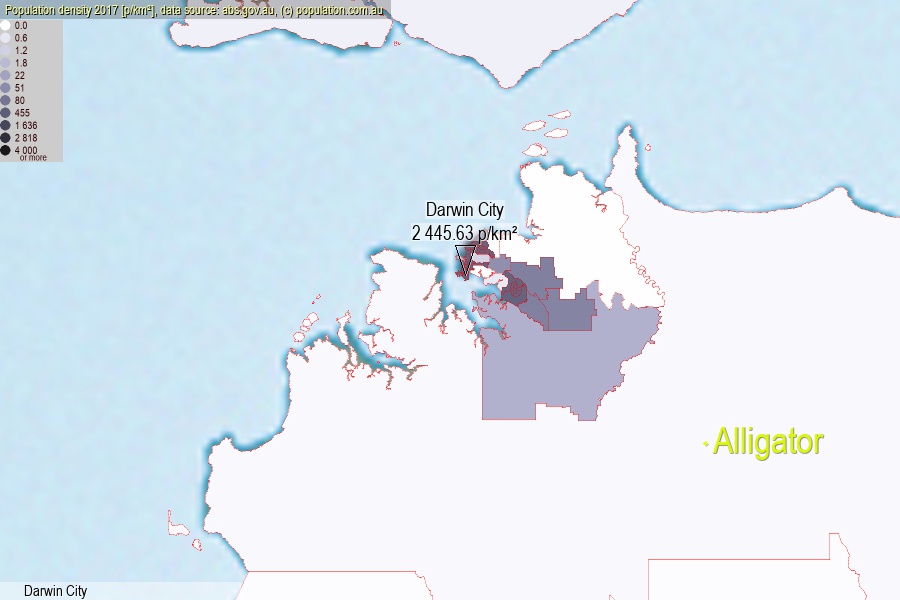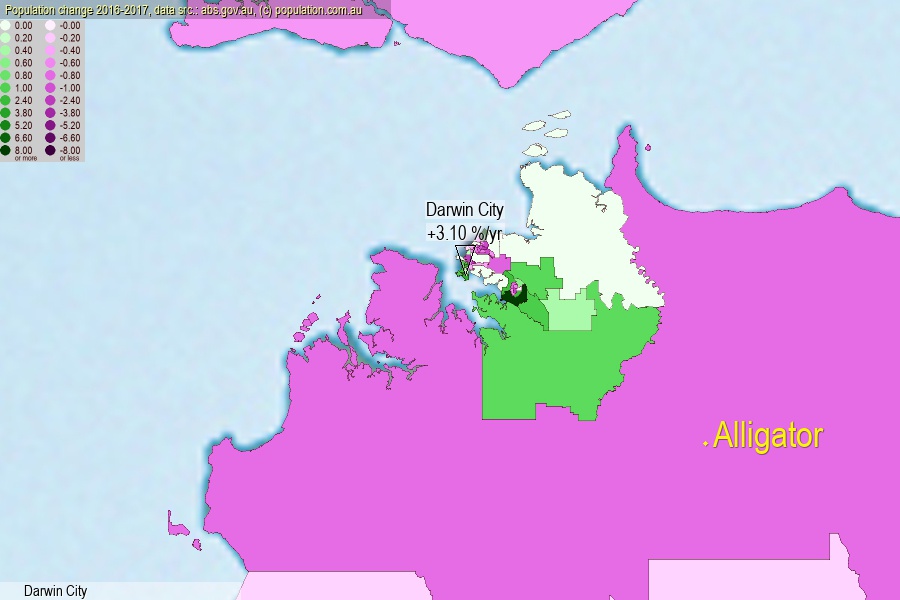 population.com.au
population.com.auLast official estimated population of Darwin City (as Statistical Area Level 2) was 7 826 people (on 2017-06-30)[2]. This was 0.03% of total Australian population and 3.172% of NT population. Area of Darwin City is 3.20 km², in this year population density was 2 445.63 p/km² . If population growth rate would be same as in period 2016-2017 (+3.1%/yr), Darwin City population in 2025 would be 9 988. [0]



Click to enlarge. Darwin City is located in the center of the images.
Population [people], population density [p./km²] and population change [%/year] [2]
View borders » (new window) [4]
[1991-1992] +1.93 %/Yr.
[1992-1993] +3.72 %/Yr.
[1993-1994] +1.22 %/Yr.
[1994-1995] +4.45 %/Yr.
[1995-1996] +6.44 %/Yr.
[1996-1997] +5.95 %/Yr.
[1997-1998] +3.06 %/Yr.
[1998-1999] +1.58 %/Yr.
[1999-2000] +3.07 %/Yr.
[2000-2001] +1.18 %/Yr.
[2001-2002] +5.05 %/Yr.
[2002-2003] +3.20 %/Yr.
[2003-2004] +4.70 %/Yr.
[2004-2005] +9.55 %/Yr.
[2005-2006] +5.15 %/Yr.
[2006-2007] +9.08 %/Yr.
[2007-2008] +20.05 %/Yr.
[2008-2009] +18.78 %/Yr.
[2009-2010] +11.24 %/Yr.
[2010-2011] +4.38 %/Yr.
[2011-2012] +7.10 %/Yr.
[2012-2013] +8.31 %/Yr.
[2013-2014] +7.27 %/Yr.
[2014-2015] +12.21 %/Yr.
[2015-2016] +7.58 %/Yr.
[2016-2017] +3.10 %/Yr.
[0] Calculated with linear interpolation from officially estimated population
[1] Read more about SA2 and Australian Statistical Geography Standard (ASGS) on abs.gov.au
[2] Population data from Australian Bureau of Statistics (Population and density: 2017; change: 2016-2017)
[3] Digital Boundaries: Australian Statistical Geography Standard (ASGS) 2016.
[4] Border coordinates are simplifyed using Ramer-Douglas-Peucker algorithm.